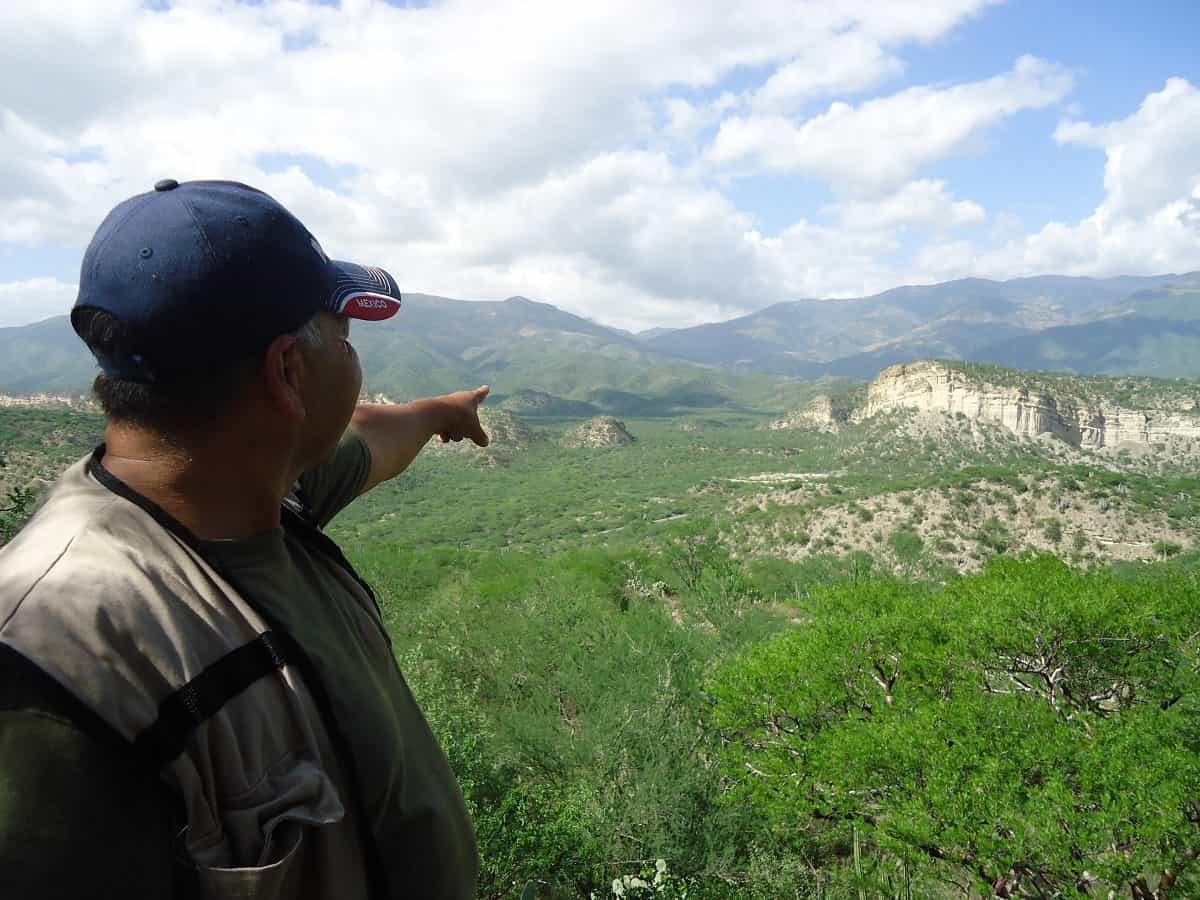Tehuacan-Cuicatlan Biosphere Reserve: its high mountains give birth to plentiful springs
Located in the south-central part of the country, the Tehuacan-Cuicatlan Biosphere Reserve is the largest in the south-central part of the country, with almost 500,000 hectares where indigenous groups converge and great biodiversity, mainly of flora.

The Tehuacan-Cuicatlan Biosphere Reserve is the largest in south-central Mexico with almost 500,000 hectares where eight indigenous groups converge (Mixtec, Cuicatlan, Ixcatec, Nahua, Chocholtec, Popoloc, Chinantec, and Mazatec) and great biodiversity, mainly of flora due to the geographic conditions that make up the reserve.
The area has a great variety of cacti ranging from large columnar cacti such as the candelabra (Pachycereus weberi) that can grow up to 16 meters (49 feet) high, the densest columnar cacti forests in the country of tetechos or viejitos (Neobuxbaumia tetetzo, Cephalocereus columna-trajani), to the smallest cactus Mammillaria hernandezii with almost five centimeters in diameter, the latter endemic to the area, and the largest protected area of dry tropical forest in south-central Mexico.
In recent years there have been species that have increased their range of distribution such as the tepezcuintle (Aguti paca), ocelot (Leopardus wiedii), the otter or water dog (Lontra longicaudis), the squirrel (Spermofillus variegatus), lynx or bobcat (Lynx rufus), temazate or red brocket deer (Mazama americana), guan (Penelope purpurascens) and the flying squirrel (Glaucomys volans). Another interesting aspect is that the reserve has one of the largest populations of a green macaw (Ara militaris) in the country with more than 100 individuals, registered since 2001.
However, the protected area would not be possible without the participation of the people living within the biosphere reserve's polygon, whose collaboration in conservation activities has promoted the protection and development of management actions based on the economic activities they have carried out since pre-Hispanic times, such as the production of palm, clay, and onyx handicrafts, the use of the forest's natural resources, and the use of the forest's natural resources, The latter, together with the enormous talent of its craftswomen, has led to national recognition of their craftsmanship.
Today the Tehuacán - Cuicatlán Biosphere Reserve is a point of reference for tourists, researchers, and anyone interested in learning about a place where conservation and the generation of opportunities for its people have managed to coexist harmoniously.

Located in the states of Puebla and Oaxaca, this Reserve is an enigmatic space where biological, geological, cultural, and historical richness converge; it is the ideal place to observe the flight and listen to the song of the green macaws and observe the forests of columnar cacti, unique in the world, offering the visitor a different experience in a desert that hides magnificent landscapes. In addition, you will be able to visit sites of exceptional universal value that show the first records of the domestication of species and agricultural technology in Mesoamerica.
Location: This reserve covers 20 counties in Puebla and 31 in Oaxaca.
Category: Biosphere Reserve.
Regional Management: Central and Neovolcanic Axis.
Date of the decree: September 18, 1998.
Climate: Semi-warm, sub-humid and semi-dry. Average annual temperature 25°C ( 77°F).
How to get to Tehuacan-Cuicatlan
Federal Highway 125, Tehuacan-Zapotitlan Salinas section. It is located 146 km ( 87 miles) from the city of Puebla. Take the highway to the state of Puebla and then follow the signs to Oaxaca. The entrance to the park should be done by local bus. The closest town to the protected area and its services: Tehuacán, Puebla. It is approximately 30 min. from the reserve.
Services
Electricity supply coverage, parking lots, passenger ground transportation, mobile network coverage, medical and hospital services, and access to potable water. Lodging in rustic cabins, camping areas, handicrafts, traditional food based on fruits and flowers, and local insects.
Activities
Flora and fauna observation, fossil observation, guided hiking, rural and landscape photography, lodging, and camping in natural areas.
Natural phenomena
A high density of columnar cacti that is unique in the world; the presence of characteristic vegetation colors that depend on the season of the year (Inflorescences of magueys, colors of burseras, contrasting landscapes in dry and rainy seasons). Existence of insects flowers and edible fruits from April to August.
Magical towns and indigenous enclaves
Huautla de Jiménez and Orizaba.
Archaeological Zones
Archaeological Zone in Tehuacan.
Archaeological zone in Santo nombre of the municipality of Tlacotepec de Benito Juárez.
Nearest city with an airport and commercial flights
Puebla, Puebla.
Traveler's Tips
The state of the weather is hot, so it is advisable to bring a hat or cap, long sleeves of not flashy colors, water, and comfortable shoes. You must make reservations at the sites of interest so that adequate attention can be given to them.
Source: CONANP




